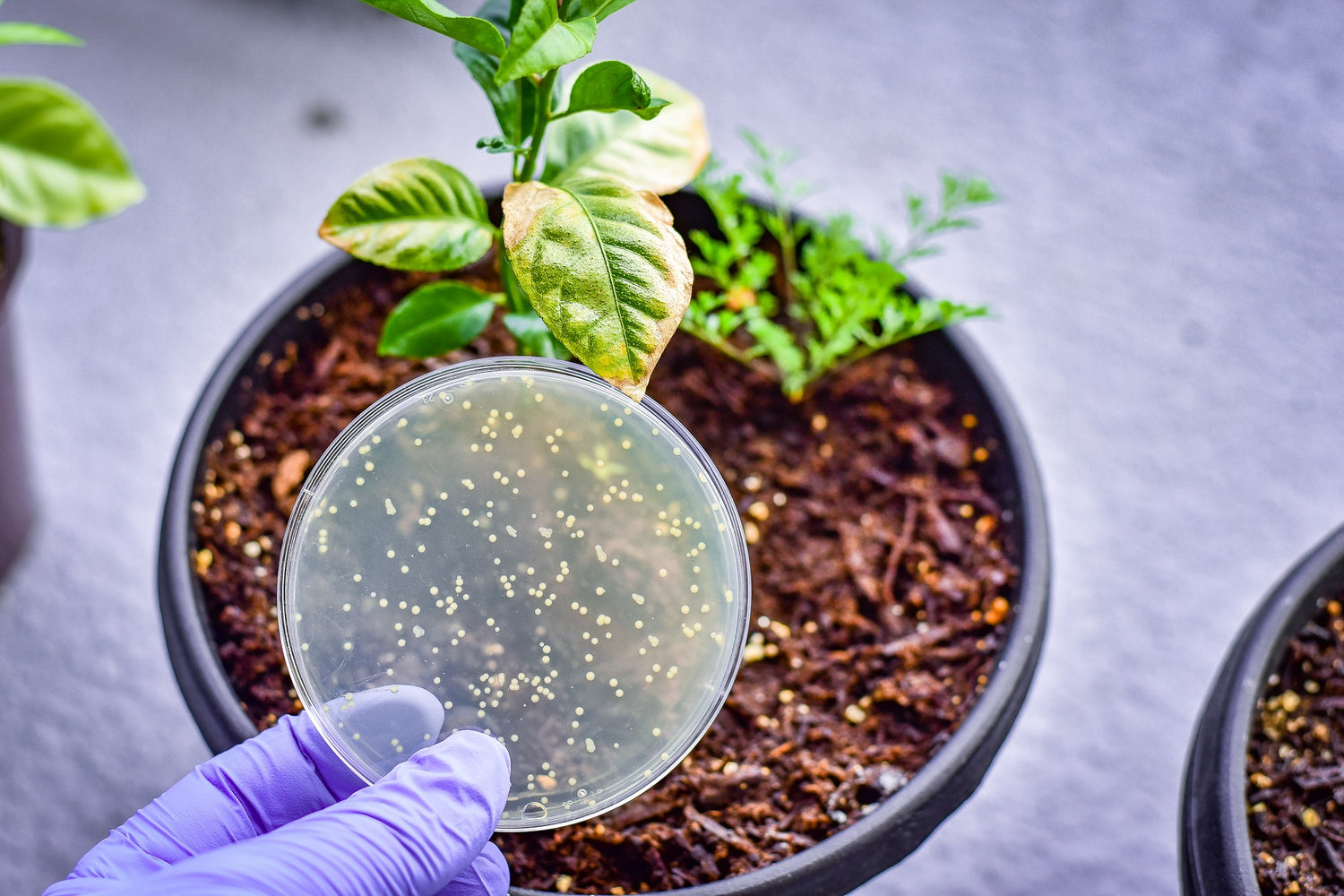Microorganisms can play an important role in helping to restore flood damaged soils. Floods can have a devastating impact on soil health by washing away topsoil, nutrients, and beneficial microorganisms. However, microorganisms can help to improve soil structure, increase nutrient availability, and promote plant growth.
Effective microorganisms (EM) are a combination of beneficial bacteria, fungi, and other microorganisms that can be used to improve soil health. EM can help to break down organic matter, improve soil structure, increase nutrient availability, boost soil microbial populations, remediate soil and promote plant growth. They can also help to suppress harmful pathogens and pests.

Restoring Soil Structure
Floods can cause soil compaction, which makes it difficult for water and air to penetrate the soil. EM can help to break up compacted soil and improve soil structure, which can improve water infiltration and aeration.
Effective microorganisms (EM) are a combination of beneficial microorganisms, including bacteria, fungi, and yeasts, that work together to improve soil health and fertility. When added to soil, EM can help build soil structure in several ways:
- Enhancing soil aggregation: EM produce a sticky substance called polysaccharides that helps bind soil particles together, creating larger aggregates. These larger aggregates allow for better water infiltration, improved aeration, and increased nutrient availability.
- Promoting organic matter decomposition: EM are excellent decomposers of organic matter, breaking down complex compounds into simpler forms that plants can use. As they break down organic matter, they release nutrients that help build soil fertility and structure.
- Improving nutrient cycling: EM can help cycle nutrients through the soil by breaking down organic matter and converting it into plant-available forms. This can lead to improved soil fertility and better plant growth.
- Suppressing soil-borne diseases: EM can help suppress soil-borne pathogens by outcompeting them for resources and producing antibiotics and other antimicrobial compounds. This can help reduce disease incidence and improve plant health.
Improving Nutrient Availability
Effective Microorganisms (EM) can improve nutrient availability in several ways:
- Nitrogen fixation: EM contains beneficial bacteria that can fix atmospheric nitrogen and convert it into a form that plants can use. This process increases the availability of nitrogen, which is essential for plant growth.
- Phosphorus solubilization: EM contains microorganisms that can solubilize phosphorus, making it available to plants. Phosphorus is a critical nutrient for plant growth, and the solubilization of phosphorus by EM can improve plant health and productivity.
- Mineralization: EM can help break down organic matter, releasing nutrients such as potassium, calcium, and magnesium into the soil. These nutrients are important for plant growth and are often locked up in organic matter, making them unavailable to plants.
- Root system development: EM can stimulate root system development, allowing plants to absorb nutrients more efficiently. This increased uptake of nutrients can improve plant health and productivity.
Boosting Soil Microbial Populations
Large numbers of bacteria exist in the soil. One gram of soil contains anywhere from a few hundred million to several billion microorganisms. Microorganisms are a fundamental component of the ecosystem and facilitate its functioning by breaking down organic substances and circulating nutrients. However, when the quantity of healthy microorganisms in the soil decreases or the balance is disrupted like during times of extreme weather (floods included), other living things such as earthworms will be negatively affected and the soil will become impoverished. The diversity of microorganisms contained in EM and the metabolites they produce will increase the number and diversity of microorganisms in the soil. When microorganisms are activated, protozoans and larger organisms such as worms will increase in number and a healthier ecosystem will result. Soil with diversified microflora will inhibit the growth of specific disease-causing bacteria, which help prevent cultivation failure and boost overall soil performance and recovery.
Soil Remediation
EM can play a crucial role in soil remediation by breaking down pollutants and transforming them into less harmful substances. EM can be used to clean up soil contaminated with a variety of pollutants, including heavy metals, petroleum hydrocarbons, pesticides, and other organic compounds. See this example of a trial showing EM breaking down Agchem residues in the soil.
The microbes will degrade pollutants through different metabolic pathways such as aerobic and anaerobic respiration, fermentation, and oxidation-reduction reactions. They will produce enzymes that break down specific pollutants into smaller, more manageable compounds that can be used as a source of energy.
Promoting plant growth
Using EM on your soil and crops will improve soil health, increase nutrient availability, suppress harmful pathogens, and promote plant growth, leading to healthier and more productive plants.
EM works by getting the natural processes to function, the way nature intended by stimulating biological activity in the soil and plant. Soil health is the key to producing a good yield whether it be pasture, crops or vegetables. Research has shown that applying EM to the soil/plant ecosystem can improve soil quality, soil health, and the growth, yield, and quality of crops.
Overall, the use of effective microorganisms can help to restore soil health and improve the resilience of flood damaged soils. For more detailed information and application rates contact EMNZ




